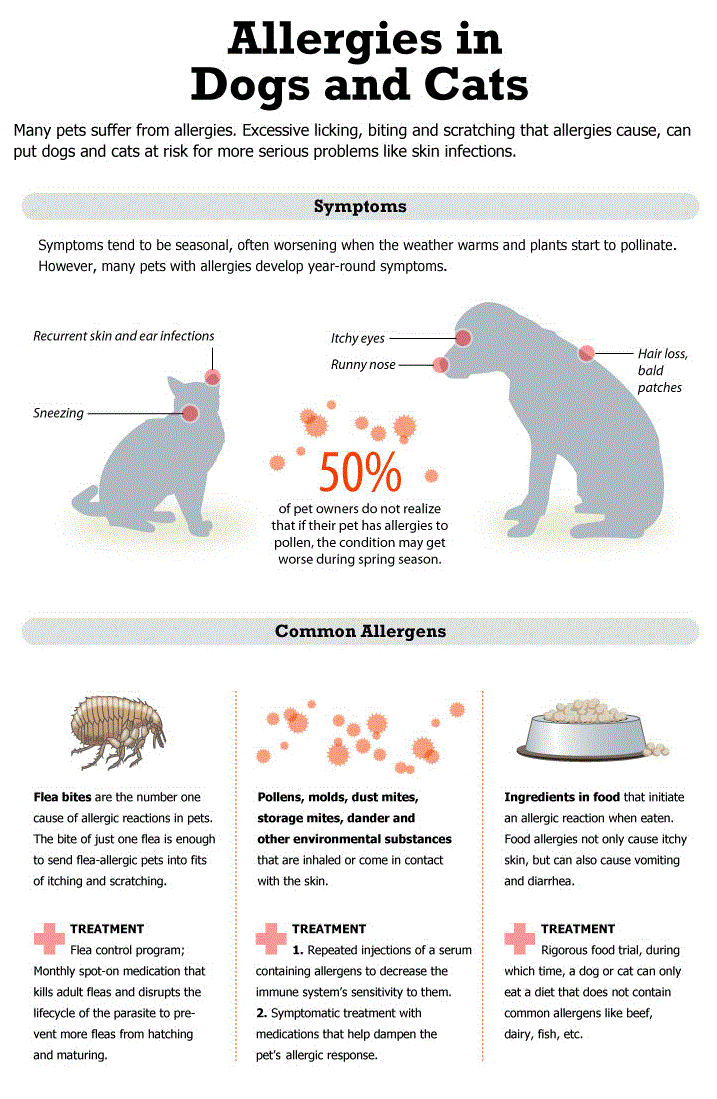
Allergy to animals: is it possible to get a cat or dog and not suffer from unpleasant symptoms
Allergy to animals, or sensitization, is a fairly common problem. Sometimes people don’t even know they are allergic to cats or dogs until they get a pet at home. How to recognize it and does it mean that you should say goodbye to the dream of a pet?
Allergy is caused not only by animal hair – skin particles, saliva, sweat and other physiological secretions also contain a protein that irritates the human immune system. In dogs, the main antigen that causes an allergic reaction is called Can f 1, in cats it is Fel d 1. The protein enters the pet’s coat, for example, through saliva, and then it spreads throughout the house. In this regard, some owners of cats and dogs mistakenly believe that allergies are associated with wool.
Causes of animal allergies
To date, the mechanism of the occurrence of allergies is not fully understood. However, it has been established that one of the causes of sensitization is a genetic predisposition. Allergies can be inherited and have varying degrees of severity. The most common reaction is to dogs and cats, with allergies to the latter being the most common. The smallest particles of the skin of an animal can fly in the air and affect the well-being of a person even after the cat has already been removed from the room.
Sensitivity to other mammalian allergens is extremely rare. Few people are allergic to ferrets, rats, guinea pigs, or rabbits, but they do happen. But on birds, an allergic reaction occurs much more often. Parrots, canaries, and even feathers in a down pillow can cause sensitization. An unpleasant reaction of the body is also possible when in contact with farm animals, so having a mini pig instead of a cat at home will not always be a saving idea. Allergy to animals does not depend on the season, but may intensify during the molting of a cat or dog.
Signs of allergies
Animal allergies are usually respiratory in nature, but other symptoms can also occur. These include:
- swelling, congestion, or discharge from the nose;
- frequent sneezing
- dry cough and breathing problems;
- attacks of bronchial asthma;
- blisters, itching, and skin rashes;
- lacrimation;
- conjunctivitis;
- redness and inflammation of the mucous membrane of the eyes.
In adults and children, an allergic reaction is almost the same, but in children, the symptoms may be more pronounced.
What to do if you are allergic to animals
Animals for allergy sufferers, unfortunately, do not exist. But there are so-called hypoallergenic cats and dogs – breeds, the reaction to the representatives of which can still occur, but is much less common. When choosing a pet, it is recommended to spend some time with him to understand whether an allergic reaction will occur or not. In case of doubt, it is worth consulting with an allergist, taking a blood test to assess the degree of susceptibility of the body to a foreign protein.
If an allergy manifests itself in a child or a new family member, it is necessary to observe the conditions that facilitate the course of the ailment:
- bathe your pet regularly, clean the eyes and ears of the animal;
- avoid close contact between the allergic person and the animal;
- often ventilate the room, do wet cleaning and clean the cat’s tray;
- see a doctor, if necessary, take antihistamines.
Over time, the allergic person may develop a tolerance to the irritating protein. It is important to follow preventive measures and not self-medicate.





